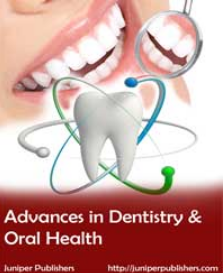Management of Radix Entomolaris in Mandibular Second Molar with Multiple Canal Ledges: A Case Report- Juniper Publishers

Juniper Publishers- Open Access Journal of Dentistry & Oral Health Management of Radix Entomolaris in Mandibular Second Molar with Multiple Canal Ledges: A Case Report- Juniper Publishers Authored by Moataz Bellah A Alkhawas Keywords Radix entomolaris (RE); Cone beam computed tomography (CBCT); Three dimensional (3D) Introduction Sometimes, flare up may occur because of incomplete elimination of pathogenic microorganisms owing to complexity and variation of the pulp anatomy leading to missing pulpal tissue which acts as a nidus for infection [1]. These variations considered as a challenge in detection and management of such cases. An extraordinary root has been reported in mandibular molars that was located either mesiolingual to the distal root (radix entomolaris) or mesiobuccal to the distal root (Radix paramolaris). Radix entomolaris (RE) was...



